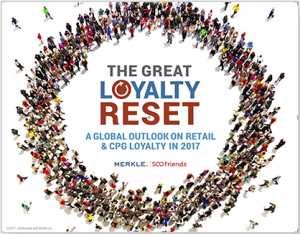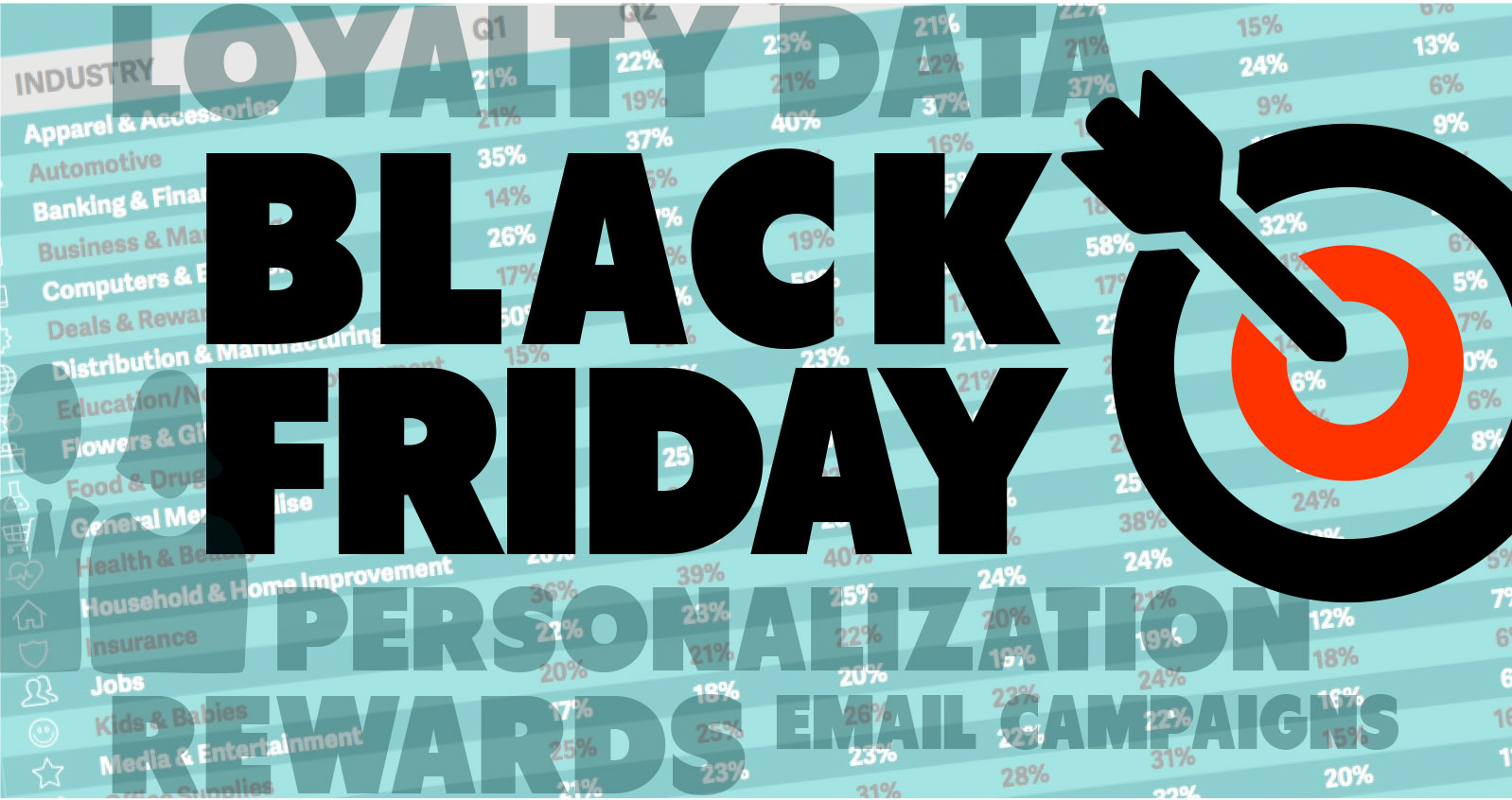Black Friday 2017: Why Loyalty Data Is Key to Sales, Clicks and Conversions
Nov 21, 2017 / By Vanessa Horwell
The Black Friday sales bonanza is upon us once again. The annual shopping pilgrimage has come at last for retailers, marketers and shoppers across the US. As always, there are the incredible deals and doorbusters for everyone – or at the very least, for those shoppers brave enough to wade through their clogged inboxes and barely personalized emails to get to what they think is the good stuff.
Last year, Black Friday-themed email campaigns increased 42% as retailers squeezed 38,268 campaigns into the two-week period leading up to Cyber Monday. (As an aside, the themed days comprising the post-Thanksgiving retail interval seem to be multiplying, including Small Business Saturday and now Giving Tuesday… and shoppers seem to be okay with that). The results of this “Black Friday” period in 2016 were impressive: 20% of Black Friday-themed emails had a read rate exceeding 20%, up from 13% the previous year, and email drove 18% of online sales in the month of November.
So, if retailers are making sales, shoppers are spending money and marketers are getting clicks – what’s the problem? Maybe it’s not so much a problem as an opportunity – an opportunity to connect the Black Friday marketing frenzy with deeper insights derived from loyalty program data.
Loyalty Programs and Business Intelligence
Successful retailers and marketers have been busy planning media buys and putting in the time, effort and PPC budgets to optimize Black Friday emails – A/B testing subject lines, greetings, landing pages – for better results, but even the best optimized emails are nothing without deep insight into a brand’s core customers. And the number one function of a loyalty program is to gather data and intelligence on core customers.

It’s a proven fact that loyalty program members spend more on average than other non-program customers. In a Q1 2017 survey conducted by Merkle, they found that among consumers in North America, the UK and Asia nearly 60% who like a loyalty program spend >15% more with that brand. The opposite is also true: 63% of consumers who abandon a loyalty program shop less overall with the brand.
One reason loyalty members spend more is because they’re selective about their programs and commit to the ones that really matter to them. Merkle found that 80% of consumers belong to 5 or fewer loyalty programs. If a retailer is worthy of a customer’s Top 5 loyalty programs, the level of mind share with that existing customer is just as significant as any Black Friday hype they can engender in a new customer. Loyalty programs aren’t meant for every customer, but the intelligence they generate should help retailers and marketers understand why their brand is attractive and use that intelligence in mass campaigns such as Black Friday.
Using Loyalty Data for Digital Marketing
Retailers and marketers love email because everyone checks their email, even on Thanksgiving Day. But crowded inboxes are meant to be emptied and the window for conversion is very small.
Last year, 13% of emails from businesses were deleted without being read, up 4% from the previous year. Mass retail industries (apparel, office supplies) had higher deletion rates than others (manufacturing, dating), perhaps because consumers are oversaturated with retail emails. At the same time, read rates across all industries were up 8% from the previous year, which can only mean that smart marketers are designing more effective emails, and consumers are getting better at weeding out the impersonal, generic junk.
Personalization isn’t just about calling customers by their name. What’s the use if John gets the exact same email as Mary? Personalization is about using customer data to make meaningful adjustments to a general campaign. At its best, true personalization leverages a critical mass of data about customer behavior (derived from CRM and loyalty programs) to deliver addressable, actionable messaging at precisely the right time in the customer’s purchasing cycle. Of course, mass campaigns like Black Friday will generate some sales on price alone, but even small uses of personalization can make a huge difference. Take, for example, Aimia’s use of maps in emails to provide personalized travel directions and drive traffic to local stores. The company tried this with its Nectar rewards program, and the maps increased email click-through rates by 66.67% and drove 31% of all clicks.

For retailers who are confident in their brand and know their core customers, not only does loyalty drive sales, but sales can also drive loyalty. Last year, Patagonia – understanding that their core customers share the company’s passion for conservation – donated all its Black Friday sales to grassroots environmental groups. The usefulness of loyalty data is less about sales tactics and more about tapping into what customers want and need. They may want new outdoor gear, but they also need to feel connected to a brand and its values, and they want to enjoy fun content, useful “how-to” tips, funny or clever copy and cool rewards. Loyalty programs generate the long-term insight that retailers need for short-term opportunities like Black Friday.
The Value of Loyalty
One way to think about loyalty data on Black Friday is: what do our core customers value beyond price? Of course, you can offer great deals and discounts, but so will everyone else – it’s hardly a differentiator or a driver of consistently profitable behaviors. But what are the second and third considerations that can set an email campaign apart from the generic, transactional alternatives?
Tapping into those incentives can help drive more sales on Black Friday and keep customers coming back long after the discounts are gone.
Merkle found that consumers join loyalty programs primarily for incentives and rewards, but they have other reasons, too, like discovering a new brand or positive online reviews. Tapping into those incentives can help drive more sales on Black Friday and keep customers coming back long after the discounts are gone.
The best way to accomplish this is to use loyalty program data to uncover the hidden, irrational, emotional and aspirational insights that lead to higher sales, clicks and conversions.
Are you maximizing the reach and impact of your Black Friday email campaigns? It may be too late this year, but now is the time to start thinking about loyalty data… Black Friday 2018 is just around the corner.
At ThinkInk, we work closely with several clients that specialize in loyalty technology and loyalty marketing, so we have lots of insight into this sector. If you’d like to learn more, let’s chat. Contact us here.
Sign up for our insights on the convergence of business and PR





